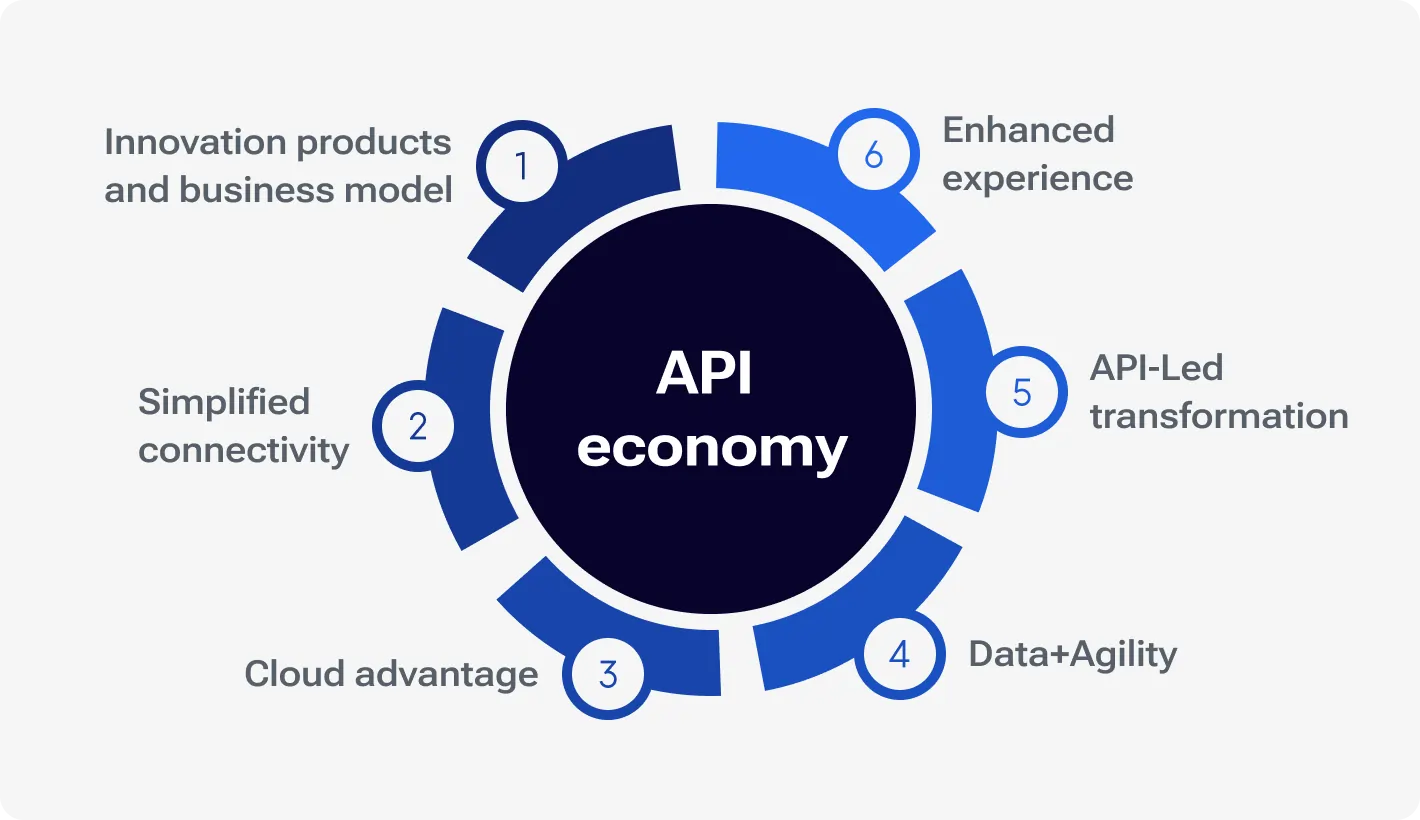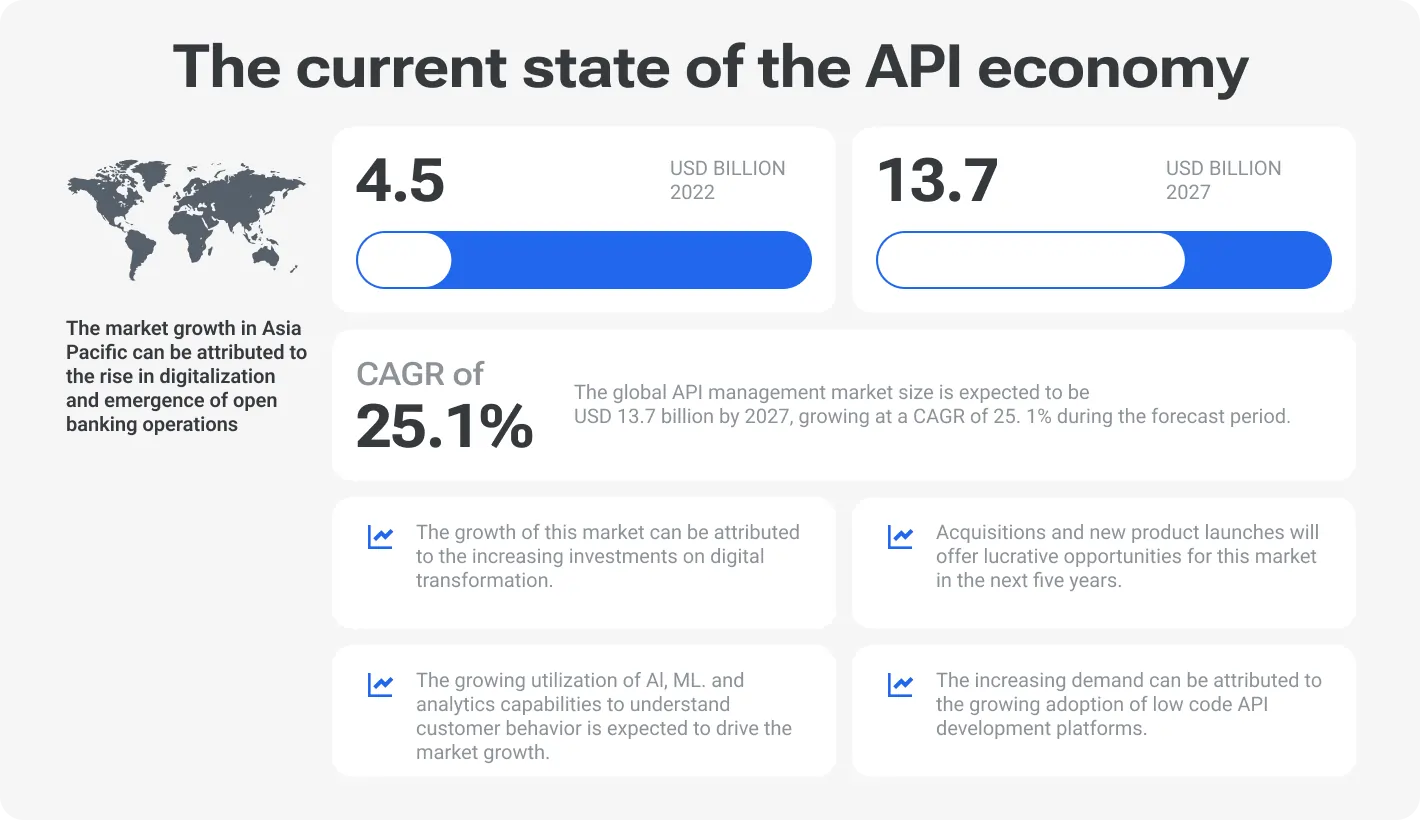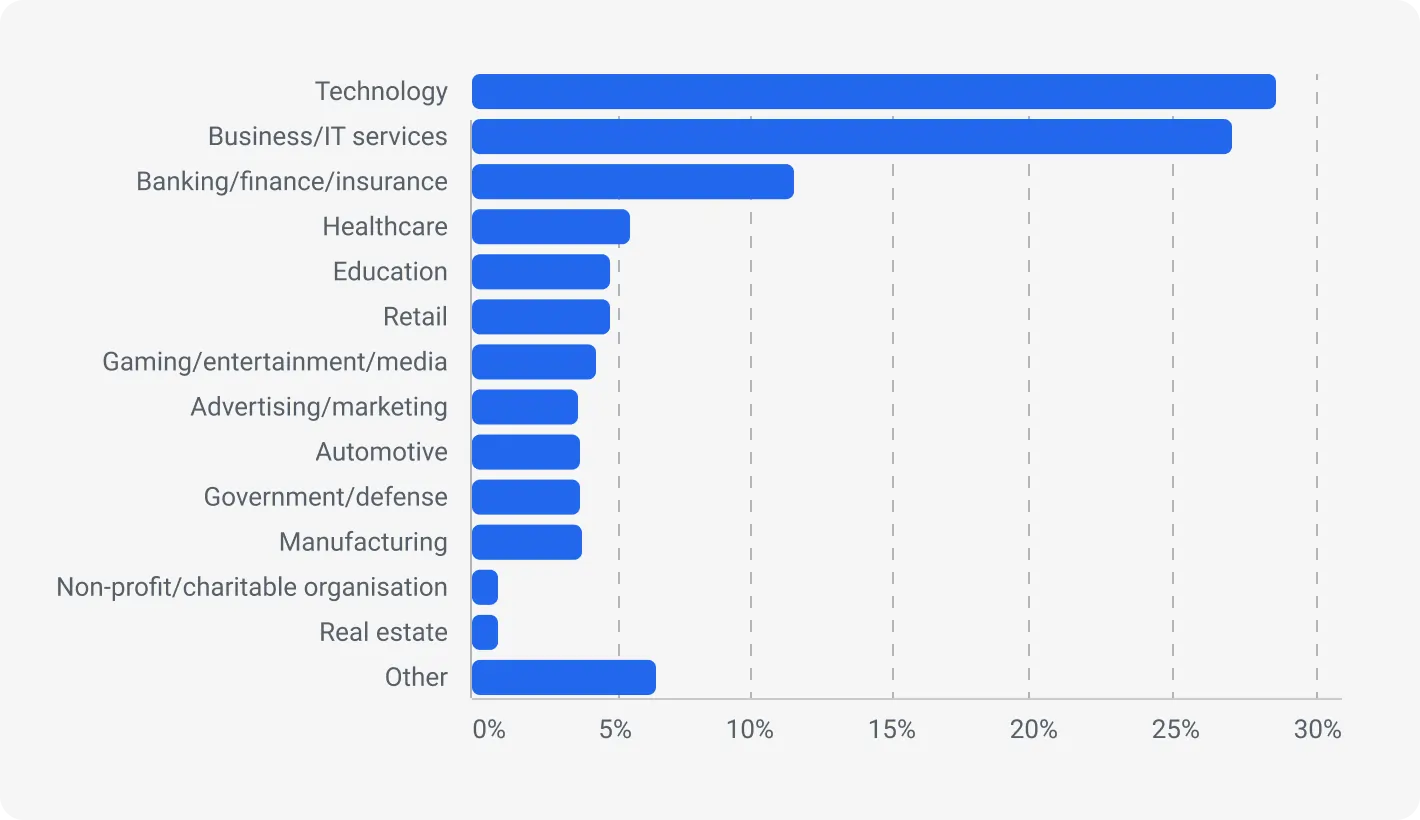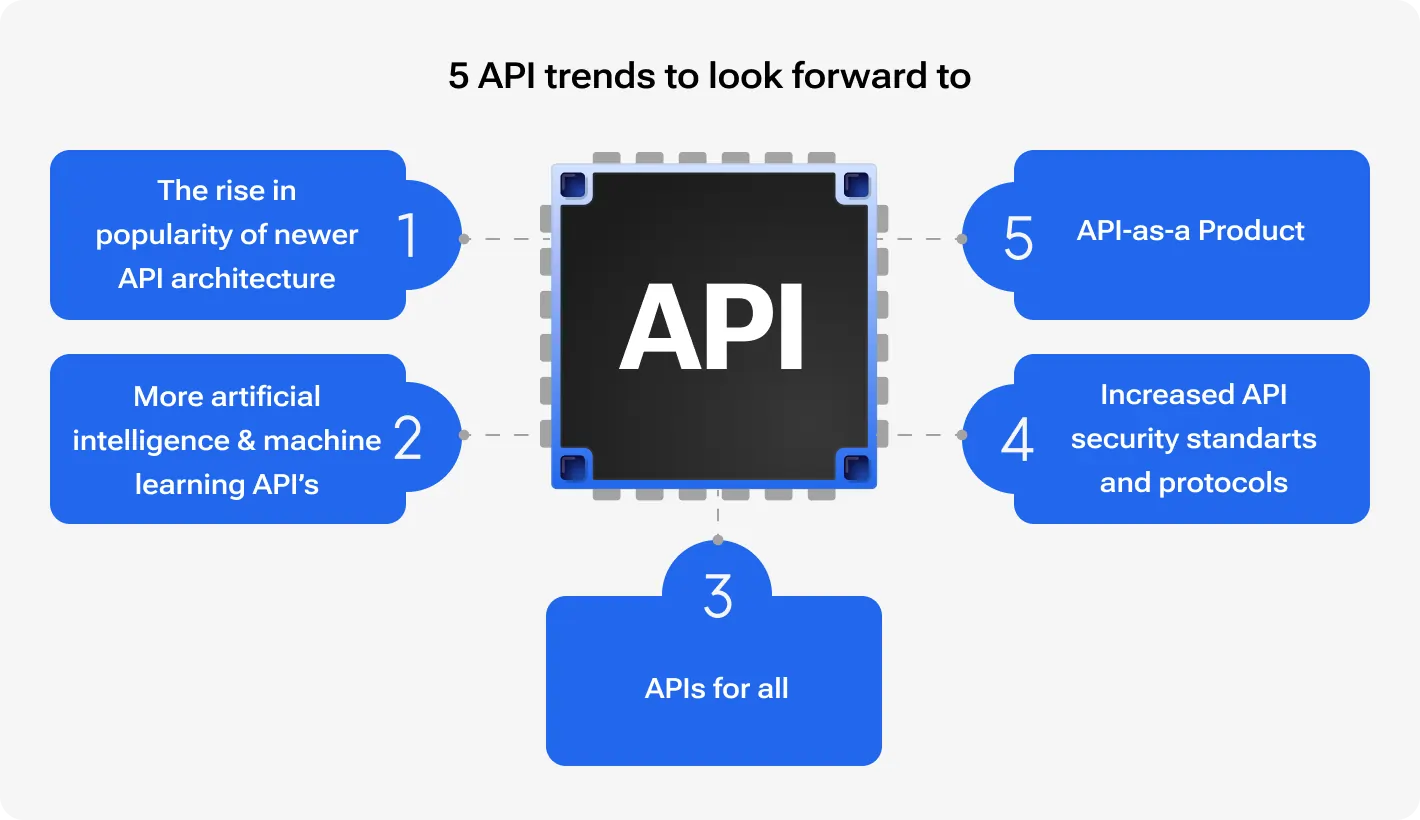Outsourcing to Czechia

How much does it cost to hire developers in Czechia?
Dec 2nd 25 - by Devico Team
Find out how much it costs to hire software developers in Czechia in 2025. Compare hourly rates, roles, and factors that impact pricing.
Hire
Hire by role
Hire Front-end developers
Hire Back-end developers
Hire Full-stack developers
Hire Android developers
Hire iOS developers
Hire Mobile developers
Hire AI engineers
Hire ML engineers
Hire Automation QA engineers
Hire Blockchain developers
Hire Data engineers
Hire Cloud engineers
Hire by skill
Hire JavaScript developers
Hire TypeScript developers
Hire Ruby on Rails developers
Hire React Native developers
Hire Flutter developers
Hire Golang developers
Hire React.js developers
Hire Python developers
Hire PHP developers
Hire .NET developers
Hire Java developers
Hire Laravel developers

API development
December 12, 2024 - by Devico Team
Summarize with:
Learn how to leverage APIs to drive business growth, enhance innovation, and create new revenue streams.
Imagine a world where companies routinely capitalize on shifts in consumer demand instead of responding to them. The ability to accurately predict future trends is a crucial skill for success in the business world, where change is the only constant. One way to stay ahead of the competition is to anticipate and adapt to changes in customer tastes and technology.
Application Programming Interfaces (APIs) are not just technical tools but essential elements of modern software development that enable seamless integration and data sharing. They provide smooth interaction and data sharing across various systems and applications. In the API economy, companies may improve their products and services, attract new consumers, and stay ahead of the curve by using innovations made by third parties. If you want your company to stay ahead of the market, you need to look to the API economy.
APIs have been a part of computing since the 1960s, but their transformative impact became evident with the rise of the Internet. Here’s a brief timeline of their evolution:
1960s-2000s: APIs were primarily used for system-level integrations. Their broader potential started to unfold with the advent of web APIs in the early 2000s.
2000s: Major platforms such as Salesforce, eBay, and Amazon adopted web APIs, significantly expanding their reach and creating a vibrant ecosystem for third-party developers.
2010s-Present: APIs have become integral to modern software development, driven by the mobile revolution and the shift towards microservices architecture. Today, APIs are even more essential as businesses increasingly adopt microservices and cloud services, which enhance their operational capabilities and efficiency. The significant investment in cloud automation, valued at $623.3 billion in 2023, highlights the growing importance of APIs in the technology landscape.

Recently, APIs have become even more vital for contemporary software development and company operations due to the rise of microservices architecture and cloud services. You can also rest assured that web-based interfaces will spread like wildfire, given that cloud automation was worth $623.3 billion in 2023.
Top API development trends you can’t afford to ignore

The need for rapid software development and company operations has propelled the API economy to current heights of size and growth. In 2023, the API management business reached $5.1 billion, growing at a CAGR of 32.9%, according to MarketsandMarkets. The rising need for application programming interfaces (APIs) across many industries, particularly those focused on enhancing digital experiences and optimizing operations, is the primary driver behind this boom. The Postman 2023 State of the API study attributes this increase to the many API practitioners, including over 25 million users. This shows how important APIs are for modern software development.
Businesses across many sectors may benefit greatly from the API economy, which is more than simply a fad. By allowing for the frictionless integration of EHRs across various providers, APIs are radically altering patient care in the healthcare industry. Retailers are taking use of APIs to provide more tailored shopping experiences for their customers by combining data from several sources. A major factor driving this expansion is the profound effect of digital connection and integration.
When it comes to facilitating business innovation, digital transformation, and seamless integration across different systems and platforms, APIs stand as one of the best options on the market. By giving developers access to data, services, and functions that aren't built in-house, APIs encourage innovation and the creation of new apps or features.

As we see in the Postman API report, virtually every sector today uses API technology. This also speaks in favor of the steady development of technology.
Tech giants like Google, Amazon Web Services (AWS), and Microsoft are heavily involved in the application programming interface (API) economy. They offer extensive API suites for their own services and also provide API management solutions that help other businesses implement, manage, and optimize their APIs. Additionally, platforms like RapidAPI and Postman have become essential for API development and integration due to their advanced testing, monitoring, and management features.
The path to smooth API integration: Expert tips and tricks
Several key developments are rapidly transforming the API economy. Here are three prominent trends shaping the future of API usage:
Security Focus. Protecting susceptible access points inside an organization's systems via the use of security-focused APIs.
API-First Design. Building services with APIs in mind improves their accessibility, adaptability, and integration potential; this approach is known as API-first design.
Intelligent APIs. Using AI and ML to make smarter APIs, so it can handle more complex problems and provide insightful data analytics.
The API economy is set to expand as more businesses recognize the value of opening up their platforms to external developers and integrating with other services. This trend not only drives business innovation but also creates new business opportunities across various industries. We demystified APIs in this blog.
API benefits include automation, platform integration, and business agility, which in turn facilitates corporate development.
Their primary advantages are:
Streamlining processes and reducing operational costs
APIs drastically save operating time and expense by automating formerly laborious processes.
Driving innovation and scalability
APIs provide for fast testing and iteration inside a flexible framework, which in turn allows for efficient development and quick scaling to adapt to changes in the market.
Enhancing customer interactions and experience
APIs boost user interfaces and enable real-time changes and interactions by integrating services such as payment gateways and CRM systems.
Creating new business models and revenue opportunities
APIs provide new possibilities for making money, including charging for access or working together on new goods. This helps to reach more people and generate more cash.
In addition to optimizing current operations, organizations can lay the groundwork for future development and innovation by using APIs. This allows them to continually improve the customer experience and explore new market possibilities.
Tapping into the API economy requires a set of deliberate steps that may revolutionize a company's operations and relationships with clients and associates. To improve your company, below is guidance on how to use APIs:
The use of application programming interfaces (APIs) in business requires a methodical evaluation of present processes to discover areas for improvement or innovation. Here’s a comprehensive guide to carrying out this assessment:
Map current business processes
Analyze data flow and integration points
Identify potential API use cases
Consult stakeholders
Set API integration project priorities
Create an initial trial run
Strive for enhancement and expansion
Though each firm's approach to API integration will be unique, certain commonalities may guide any organization to success. Now we may analyze each of them:
Important choices downstream may be informed by carefully crafting the objectives of your internal and/or customer-facing connectors. Some instances are as follows:
If increasing your close rate is one of your objectives, you could choose to give more weight to integrations that are essential to your prospects.
To achieve your aim of supporting several HRIS connectors with your product, you may want to outsource these integrations to a third-party platform.
If your agenda is for better employee onboarding is to integrate the technologies required for employee onboarding, such as your applicant tracking system (ATS) and human resources information system (HRIS).
It is essential to set up a system for measuring success before getting into the nitty-gritty of API integration. To start, make sure your objectives and key performance indicators are crystal clear and quantifiable.
Establish Key Performance Indicators (KPIs) like decreased processing times, cost savings, or enhanced customer satisfaction as a way to measure the success of each API project.
Set milestones to evaluate your progress towards these key performance indicators and make necessary adjustments to your plan to remain on course.
The next critical stage in developing an API strategy is to choose the right APIs and partners to propel your project ahead.
Search for application programming interfaces (APIs) that provide the features your company needs, are reliable, and can expand to meet your needs.
Work with API suppliers who have shown themselves reliable, have excellent customer service, and are in line with the norms and practices of your sector.
You can learn more about how to choose the right API development partner on Devico blog.
Making sure the APIs you integrate are secure and up to code is critical as you roll out your API strategy. Include this crucial stage in your API integration strategy to preserve your operations and develop confidence with your clients.
Protect sensitive information by implementing security measures that are commonly used in the business. These measures include encryption, secure access tokens, and regular security audits.
If you want to keep out of hot water with the law and avoid fines, make sure your APIs are GDPR, HIPAA, and any other industry-specific standards.
Proper adherence to design, documentation, and maintenance best practices is crucial for the effective deployment of APIs. When thinking about each part, keep these things in mind:
If you want your APIs to grow with your company and your customers, you need to make sure they are strong and extensible. Keep this checklist for API development success in mind:
Establishing an upfront agreement. Clearly State the Goals and Capabilities of Your API Right From the Get-Go. Make use of API specification formats such as OpenAPI (formerly Swagger) to record the architecture, endpoints, and anticipated replies of your API.
Adopt a RESTful design. If it applies, use a RESTful design to make sure your API is easy to use and follows best practices for the web. Some examples of this include communicating without a state and utilizing HTTP methods directly. Another is making sure that URLs are resource-oriented.
Put throttling and rate limiting in place. These measures will prevent your API from being abused or overused. Even when the API is heavily used, its performance and availability will be maintained.
Implement caching mechanisms. Improve performance by making advantage of caching methods where applicable. For example, you may minimize server load and speed up user response times by storing common replies.
Make sure it can scale. This may be achieved by employing cloud services that can grow dynamically, or by designing your backend to perform effectively across dispersed servers.
Put safety first. Authentication, authorization, and encryption are three strong security methods that should be used from the beginning. Think about using OAuth for safe access, and make sure you always utilize HTTPS to safeguard data while it's in transit.
Plan for extensibility. New additions or changes to existing ones shouldn't cause compatibility issues for current users.
Testing and validation. When developing an API, it is important to regularly verify it using automated testing tools to ensure that it works as expected in all situations, even when under heavy pressure and after receiving changes.
If you stick to these rules, your API will be ready to handle the current and future needs of your customers and company.
The usability and acceptance of your API may be greatly improved with clear documentation and comprehensive support. Their importance and how API users benefit from them are as follows:
Empower Developers: Well-documented APIs provide all necessary information for efficient integration. This clarity significantly reduces the learning curve and integration time, allowing developers to start using the API quickly and effectively.
Ensure Consistency: Thorough documentation ensures consistent usage and implementation of the API across different projects. By providing uniform information to all users, you minimize variations in how the API is utilized.
Facilitate Self-Service: Extensive documentation allows developers to troubleshoot and solve problems independently. This reduces the volume of support requests and increases developer satisfaction, as they can find solutions without needing immediate assistance.
To keep your API safe, efficient, and dependable over time, regular monitoring and maintenance are essential. The following is an explanation of the significance of these activities and how to put them into action:
Make use of ongoing monitoring to spot and fix problems before they escalate, guaranteeing API dependability.
Evaluate performance in different environments to identify areas that might be improved.
Keep an eye out for any security breaches by monitoring them regularly.
Keep tabs on performance indicators like response times and error rates with the help of tools like Datadog or New Relic.
Create alerts to be notified of any performance concerns so that you can fix them quickly.
To keep API performance at a desirable level, it is important to establish performance benchmarks and to test against them regularly.
Maintenance periods may be planned to ensure that updates are sent out with little disturbance to users.
Maintain up-to-date documentation and changelogs by meticulously documenting all changes and checking for updates often.
Iteratively enhance the API based on user input and performance metrics.
Maximize customer happiness and maintain a competitive advantage in the market by employing extensive monitoring and frequent maintenance processes to guarantee your API stays a dependable, secure, and efficient tool for consumers. Learn a couple of expert tips and tricks for smooth API integration in our blog.
Checklist for API development success
Now, let's dive into two captivating case studies that showcase how famous firms have successfully used APIs. We'll next go over the essential takeaways from these examples.
Thanks to Spotify's powerful API, third-party developers may build apps that integrate with the service and improve the listening experience for Spotify users. Spotify makes its extensive data set available to developers. This data set includes user profiles, playlists, and song details.
Efficiently tracking listening patterns and enhancing user engagement via social sharing are just two examples of how this integration has sparked a thriving ecosystem of music-related applications. Spotify can stay ahead of the competition because of the constant innovation brought forth by third-party developers.
Twilio is an API provider that helps businesses integrate several forms of communication, including phone, text, and video calls into their services.
To improve privacy and trust, Airbnb, for instance, uses Twilio's API to encrypt conversations between hosts and guests. Through the facilitation of smooth, secure, and efficient interactions, this integration has simplified processes and greatly enhanced the user experience.
Various important takeaways are revealed by analyzing the cutting-edge API integrations of Twilio and Spotify. Their successful API apps taught us why your business needs API integration now more than ever:
Adaptability: Twilio's APIs illustrate how versatile APIs can be, fitting into various sectors such as healthcare and real estate.
Ecosystem growth: Spotify’s API demonstrates how robust APIs can foster a thriving ecosystem of third-party applications, driving innovation and engagement.
Enhanced features: APIs enable developers to add functionalities, offering users more control and customization.
Strategic advantage: APIs provide businesses with the ability to innovate and adapt more effectively than competitors.
Thanks to new technologies and shifting corporate priorities, the API economy is certain to grow and change in the years to come. Looking forward to the future of APIs, here are a few API trends and forecasts from experts:

The main trend in API development is to continue the most popular behaviors as seen through the eyes of users. The most popular market API trends that customers have come to accept are elaborated upon further.
API-First approach
Because of their widespread use and high level of acceptance in the industry, APIs are often companies' first choice. This API-first trend is reflective of consumer tastes and commercial demands. By using this technology, businesses can better understand the significance of APIs and how they fit into their overall system. Increased adaptability and responsiveness to changing market conditions are outcomes of adopting this strategy.
Hybrid API architecture
The availability of enterprises using Hybrid multi-cloud systems makes this trend the most recommended. The benefit of being present in both the world of cloud services' agility and flexibility is provided by the follow-up of this strategy. While still employing the same platform architecture. Performance, security, and total cost are all improved due to this integration.
API security
API security is becoming more important as their usage grows. It is critical to safeguard sensitive information and guarantee the authenticity of API interactions. Solutions for API security, including rate limitation, tokenization, and AI-driven threat detection, are on the rise.
GraphQL-API adoption
An increasingly popular alternative to RESTful APIs, this is known as an API query language. Thanks to its adaptability, users may only request the data they need, which improves speed and efficiency by minimizing data over-fetching and under-fetching. Recent data from the RapidAPI Survey shows that GraphQL's popularity grew 400% in only one year. Experts in the field anticipate it might increase to 30% to 50% during the next three to four years.
API marketplace
An increasing number of API marketplaces are facilitating the discovery, access, and integration of third-party APIs for enterprises. The application programming interfaces (APIs) that companies need to improve their goods and services may be easily found in these markets, which act as ecosystems.
Hyper-connected APIs
The API economy is experiencing several consequences due to the interaction of numerous aspects. It is mostly making API maintenance more complicated and complex. Second, a new wave of API management tools and services is emerging as a direct result of this development; they are designed to help enterprises deal with the increased complexity. Finally, it highlights how important it is for different API management systems to be more interoperable.
AI and ML integration
Applications are increasingly incorporating AI and ML capabilities via APIs. Accelerating the incorporation of AI-driven features is made possible with APIs, which provide developers access to pre-built AI models and services.
Emergence of green APIs
The most popular trend right now is the incorporation of green APIs, which reflect the increasing public concern for environmental issues. These application programming interfaces optimize data transmission and server resource utilization to reduce energy consumption and carbon emissions.
Looking forward, API management's significance in facilitating digital transformation and propelling business innovation becomes more apparent. The following are some hypotheses on the trajectory of API management:
As more and more businesses undergo digital transformation, API management will play a crucial role. To develop new goods and services, integrate existing ones, and take advantage of cloud computing, businesses will use application programming interfaces (APIs).
The evolution of API administration will be influenced by technological developments like the broad use of serverless architecture and microservices. Companies will be able to increase their agility and adaptability with these innovations, as they will allow them to create APIs that are more flexible and scalable.
The API economy is set to expand in size and strategic significance, according to these API trends and projections. This will change the way organizations use technology for innovation, scaling, and ecosystem interaction.
APIs have evolved from mere development tools to crucial components driving business models and boosting revenue. As a cornerstone of digital transformation, APIs are indispensable for modern enterprises and should be strategically leveraged.
Here’s why APIs are vital for modern companies:
Increased Operational Efficiency—Securing APIs helps speed procedures, minimizing vulnerabilities and downtime that may impair productivity.
Enhanced Customer Experiences – Businesses may provide more dependable and powerful services to their customers by assuring the security of APIs, which in turn increases user pleasure.
Access to New Revenue Sources—Safe APIs provide for safer integration with other platforms and services, which might lead to the discovery of new markets and business prospects.
Devico specializes in improving your API strategy for success. Contact us to discover how we can elevate your digital capabilities with secure and effective API solutions.
Outsourcing to Czechia

Dec 2nd 25 - by Devico Team
Find out how much it costs to hire software developers in Czechia in 2025. Compare hourly rates, roles, and factors that impact pricing.
Outsourcing to Czechia

Nov 25th 25 - by Devico Team
Compare Czechia and Poland for software outsourcing in 2025. Discover costs, talent, infrastructure, and which country fits your project best.
Outsourcing to Czechia

Nov 18th 25 - by Devico Team
A complete guide to outsourcing software projects to Czechia, learn about costs, talent, benefits, and how to build successful partnerships in 2025.